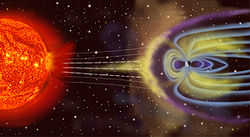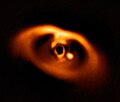This article or section possibly contains original synthesis. Source material should verifiably mention and relate to the main topic.(February 2024) |

A Habitable Zone for Complex Life (HZCL) is a range of distances from a star suitable for complex aerobic life. Different types of limitations preventing complex life give rise to different zones. [1] Conventional habitable zones are based on compatibility with water. [2] Most zones start at a distance from the host star and then end at a distance farther from the star. A planet would need to orbit inside the boundaries of this zone. With multiple zonal constraints, the zones would need to overlap for the planet to support complex life. The requirements for bacterial life produce much larger zones than those for complex life, which requires a very narrow zone. [3] [4] [5]





